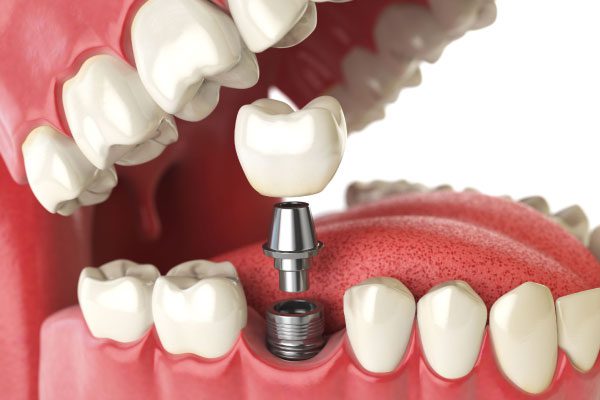Dental Implant Types and Techniques Explained

Are you wondering what dental implants are? This is a medical term used to refer to an artificial tooth root. Dental implantation is a prevalent treatment to replace a tooth after tooth extraction or loss. It is a successful strategy to replace a decaying or extracted tooth as around five million implants are placed in the US annually.
Where are Implants Implanted?
Implants are implanted surgically into the jawbone. They appear similar to a screw but are supposed to bond with your natural bone. Basically, dental implants create the foundation to insert artificial teeth or dental crowns. The process involves placing a supporting tooth (abutment) between the crown and the implant to connect the pieces. The supporting tooth connects the crown with the dental bridge, too, as well as partial and removable dentures.
How Does Dental Implantation Work?
For your information, a dental implant comprises three parts, each of which performs different functions. The first part is the implant itself or the screw that is the artificial root of the tooth. The second part is the abutment that connects the crown to the screw. The third part is the fake tooth or crown. This is the visible part of the implantation; therefore, it must match your teeth’s natural color and appearance.
Materials and Techniques Used in Dental Implantation

There are two different forms of implanting teeth called Endosteal and Subperiosteal.
Endosteal Dental Implants
This is one of the most common types of dental implants nowadays. Also called the root form implantation, the endosteal implants comprise small screws, titanium, and alloplastic materials. These implants are inserted surgically into your jawbone and take some time to bond with your natural bone.
Subperiosteal Dental Implants
This is relatively rare and considered suitable for patients who lack sufficient jawbone to allow endosteal implants. The procedure involves placing a subperiosteal implant under your gums, either over or on the jawbone, and surgical insertion isn’t a part of the process.
Dental Implant Types

There are four types of implants you can choose from, which are described below:
Single Tooth Implants
This kind of implant is advised when you want to replace a missing tooth for aesthetics and functional purposes. These implants only need a single dental crown to connect with the screw. Its median cost range between $3,000 and $4,000.
Implant-Supported Bridge
Dental bridges are fixed and restore function by stopping the movement of other teeth. These bridges are best suited for those having multiple missing teeth and serve as a connective anchor for a bridge rather than a natural tooth. Implant-supported bridges improve speaking and eating functions and may cost from $5,000 to $16,000.
All-on-Four Implants
These implants are suggested when the patient wants a safe and secure solution to cover multiple missing teeth and restores the entire lower and upper jaw. This restoration is permanent, and for cleaning the tooth and dental exams, you can remove the overdenture. Its average cost is between $15,000 and $20,000 for each arch.
Three-on-Six Implants
This is a better substitute for the implant-retained denture and comprises three separate dental bridges that are fixed to 6 dental implants. Each arch for this type of implant can range between $10,000 and $15,0000.
Why You Have Missing Teeth?
You may lose teeth due to several reasons and opt for dental implants. Some common causes include:
Decaying Teeth
Poor nutrition and insufficient oral care are the primary causes of tooth decay. If restorative treatment isn’t provided, the cavitated tooth will keep deteriorating and would be eventually lost.
Periodontal Disease
It is a severe gum disease that occurs when the gums start wearing away, and decay-encouraging bacteria and plaque get under the gums, which leads to inflammation. As a result, bone loss occurs around the teeth and jaw, and teeth get loose or require extraction.
Age Factor and Medications
Tooth loss is a common feature of old age, so that many patients may require dental implants after 55 years of age. Furthermore, those taking medications for high blood pressure, cardiovascular diseases, and heart diseases are also at a higher risk of losing teeth.
Trauma
Any trauma such as an injury, accident, or fall can cause damage to the teeth and lead to tooth loss. Dental implantation becomes inevitable when it becomes impossible to restore it to its natural function and shape.
Dental Implants- Advantages and Disadvantages
Advantages
Implants are comfortable and function just like natural teeth, so you can speak or chew normally.
It improves your self-esteem.
It alleviates stress from your existing natural teeth and offers independent assistance/support.
It preserves the bone structure and prevents aging.
Doesn’t allow jaw height loss.
You can easily care for them, and cleaning is not an issue.
Implants may last between fifteen to twenty-five years and last longer than other options, such as dental dentures and bridges.
Disadvantages
Implants won’t whiten as natural teeth do.
You have to undergo an invasive treatment to implant teeth artificially.
Dental implants are expensive; however, these offer long-lasting benefits.
There’s a low risk of fracture.
You will need bone grafting before replacement if you don’t have adequate natural bone left.
Step by Step Process of Dental Implantation
You can consider endosteal implants as outpatient surgery, after which patients are discharged the same day. But, the process itself requires months to complete, particularly during the healing process or prior to placement of an artificial tooth. The entire method of dental implanting comprises several steps, including the following.
Step 1 —Tooth Removal
This is the first important step if the decayed or damaged tooth hasn’t fallen and is still in the mouth. If the tooth is missing, this step is skipped.
Step 2 — Grafting, Preparation of Jawbone
Since most patients have soft or thin jawbones, they must undergo bone grafting to enhance bone quality and ensure the procedure is successful. This includes synthetic bone grafts like natural grafts or a bone substitute. It takes several months for the healing process to complete, and a dental implant follows suit.
Step 3 —Placement of Dental Implants
The oral surgeon will expose the bone during the implantation procedure and use small instruments. They will start cutting the gums, drill holes, and position the screw/implant/tooth root deeply inside the bone.
Step 4 — Healing Process
The healing process or osseointegration starts after the screw or implant is fitted into the jawbone. Once this is done, the supporting bone starts bonding with the implant. It may take a few months to be completed to solidify the foundation to support the artificial tooth.
Step 5 — Preparing for Crown/ Abutment Placement
The dentist will start placing the crown above the implant and extend it above the gums when healing is done.
Step 6 — Placement of Crown/Artificial Tooth
After the implant has grown inside the bone and is sturdy enough to allow chewing, the dentist will start making new impressions and create a custom crown. This will look exactly like the natural teeth.
Step 7 — Post-operative care
Patients are advised to eat soft foods and ensure oral care best practices. They must avoid alcohol, tobacco, and caffeine. The dentist will prescribe antibiotics and pain medications for aftercare.
















